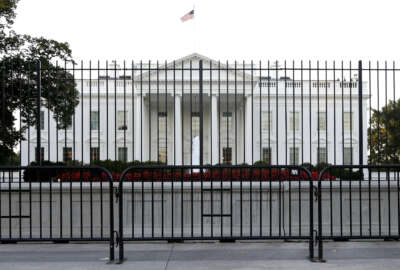Change always brings uncertainty. When that change is institutional, employee uncertainty can lead to low morale, interruptions in service and numerous other issues. And few institutional changes are as widespread and tumultuous as a presidential transition.
That’s why GovExec held a panel discussion to get the advice of agency leaders who have recent experience with these issues, namely Davita Vance-Cooks, director of the Government Publishing Office, and Gerald Ray, an administrative appeals judge and deputy executive director for the Office of Appellate Operations at the Social Security Administration.
Both agencies have recently undergone institutional changes. SSA switched to a digital claims process, adapting to a more digital-savvy customer base. And the GPO has done so much to move from print to digital that Congress changed its name in 2014, from “printing” to “publishing.”
“Our mission will always remain the same,” said Vance-Cooks. “Our mission is to keep America informed. And our strategic vision is to ensure that we move towards a digital information platform. But the execution of that mission has changed to accommodate the digital platform. So the major changes we’re encountering are cultural.”
Vance-Cooks said that a strategic vision is important for leaders, and it was one of her first priorities when she took over the agency in 2012. She wanted every employee to be clear where the agency was heading, and that they could maintain a “laser-like focus” on the mission. She said that required leaders to develop a narrative and stick to it.
Ray agreed. “If we don’t tell our story, other people will make one up for us,” he said.
Both agencies hold quarterly town hall meetings with employees, as well as sending emails, newsletters and other publications that allow the leadership to communicate directly to employees and keep them informed.
Vance-Cooks said GPO even has a section at the end of their town halls called “Rumors,” where agency leaders directly address rumors that have come to their attention, or that employees bring up during the meeting.
They also said training helps to increase employee buy-in, giving them a sense of confidence and security that they will have a job that they are prepared for after the transition.
“You have to communicate to employees, ‘Change is good. Change matters. Change makes you relevant,’” Vance-Cooks said.
This is especially important when transitions are made toward digital systems. Ray said younger employees are able to make that transition more easily than older employees, because they’re more comfortable in a digital environment.
But Vance-Cooks said younger employees come with their own set of issues: the tradeoff for better digital skills is that they expect more flexibility — the ability to work from home, set their own schedules, and more. But Ray said that can require even more change, because telework requires more automation.
Another important thing to focus on, they said, is to foster understanding and investment throughout the agency from top to bottom.
“We have what’s called an idea management program … where we actually reward individuals for submitting ideas that support the mission, either makes us more efficient, improves the quality, or just improves the culture,” Vance-Cooks said. “And we broadcast and communicate it so that everyone understands what has happened.”
Ray also discussed the importance of using data to manage upward, providing evidence and solutions to executives in order to influence change.
Vance-Cooks said there was an instance at GPO where leadership felt like middle-management needed more buy-in. So executives sent the managers to leadership training — not management training — to help them understand the perspectives of agency higher-ups.
Finally, Vance-Cooks said employees at all levels need to understand what it means to be valuable to stakeholders.
“The message I’m trying to convey is that an organization exists to serve,” she said. “And if you don’t know how to serve your stakeholders, that’s when you run into trouble. So you’ve got to take the time to understand what your stakeholders want.”
Copyright
© 2024 Federal News Network. All rights reserved. This website is not intended for users located within the European Economic Area.
